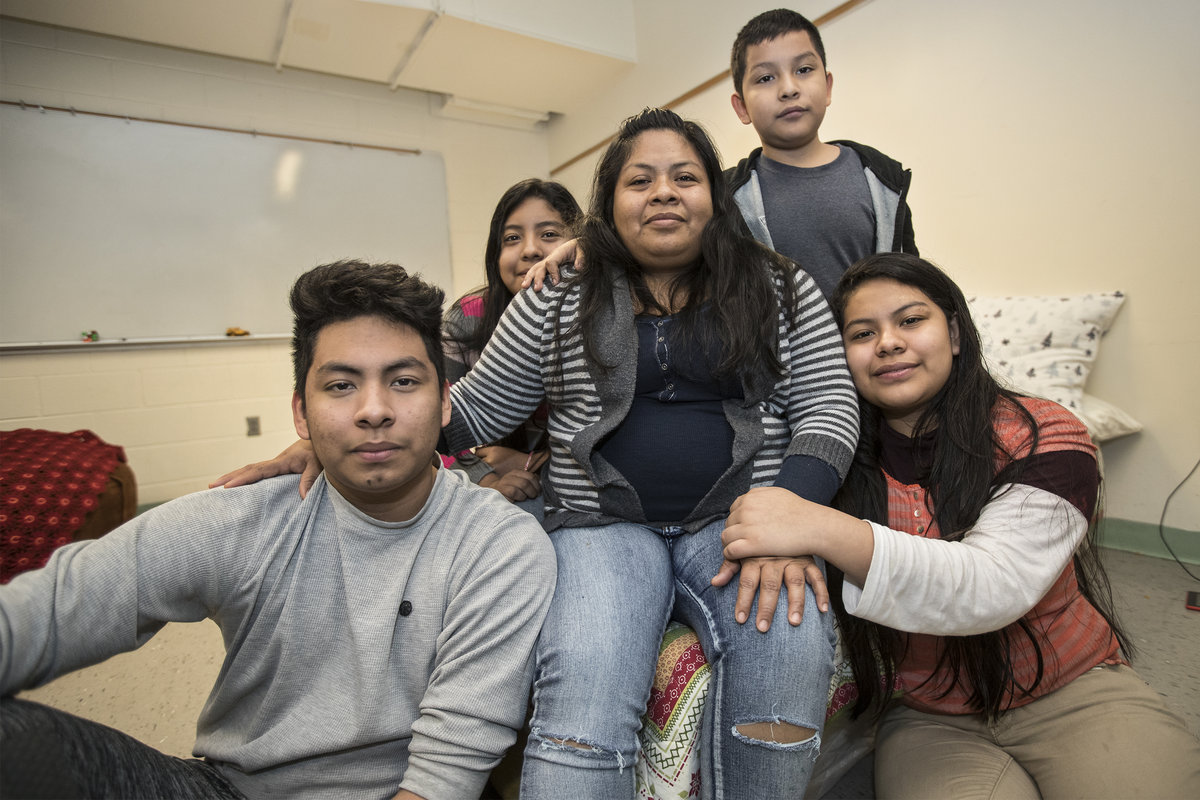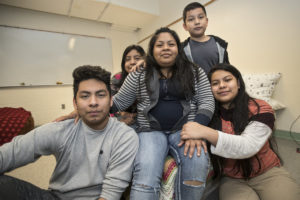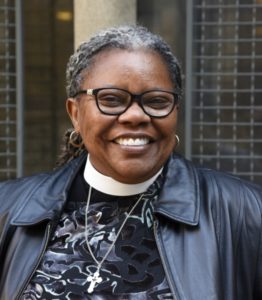Immigration and Ordination

I woke up on Thursday morning to a white curtain outside my window – swirling snow. After two weeks of unusually cold weather and at least one more to come, we are having a real winter after a rather warm fall. “What is Carmela Apolonio Hernandez and her family thinking today?” I wondered.

Carmela Apolonio Hernandez and her children in their basement living quarters at the Church of the Advocate in North Philadelphia. Credit: Philly.com
Carmela went from church door to church door in the Philadelphia area to avoid deportation to Mexico because she heard that a church here had already welcomed another family. Her four children were in the car. Which church gave her sanctuary? The Church of the Advocate. You may know it as the place where the first “irregular ordinations” of eleven Episcopal women took place in 1974. Now the Vicar is Rev. Renee McKenzie, keeping this family out of the cold and out of the cold hands of ICE.

Rev. Dr. Renee McKenzie
ICE is an equal-administration harasser, sorry to say. As the snow moved on, I heard a lukewarm endorsement of DACA (all of Carmela’s children would qualify) and how bad “chain migration” is. That is today’s renaming of the process of allowing family members to immigrate. So where do we stand as Catholics?
The USCCB last fall faced protesters at their annual meeting. They issued a statement about concern for immigrants and leaving it up to individual bishops to decide on sanctuary. Legal issues make some cautious about opening their churches to those facing deportation, while some are most willing to step out and shelter. Wilton Gregory, the Archbishop of Atlanta, says that there was unusual unanimity among the bishops at this meeting about welcoming immigrants, whatever their religion or ethnicity. But the man of the hour again this week, Steve Bannon (no relation), suggested in his 60 Minutes interview that the church is benefitting from the influx of immigrants as it faces declining numbers.
Is that all it is? In Waterbury, CT, the mind-set changed, according to the NCR. The six churches serving various European immigrant groups were consolidated into one parish with two worship sites. All Saints – new name – gets its vitality from those who are in in the church now: 40% Latinx population from many countries. The Colombian pastor, Diego Jimenez, and two associates try to combine traditions of old and new groups. One long-term parishioner, who notes that some complain about the Latin presence, says, “The church is now filled with children. That’s nice.” This “Field Hospital” article puts a positive spin on closing churches by focusing on the Latinx population. Is that happening elsewhere?
The Detroit Archdiocese Encuentro is described in another “Field Hospital” article in NCR. This large meeting at the seminary brought Latinx Catholics together, but the article quickly shifts to the parish level and the efforts the pastor of St. Damien of Molokai makes to protect his people from ICE. Guadalupe Guzman, the office coordinator, gives examples of the fear many have and the impact on parish programs. The parish encuertro process resulted in a legal clinic, a really practical answer to people’s needs.
I also want to call attention to the tremendous witness of Mary’s Pence, which has been funding equally practical programs for women and girls for forty years now. Their grantees are small organizations that serve women of color and immigrants in the United States and Canada. The deadline for this funding cycle is February 1. Think “Mary’s Pence” the next time your parish has a “Peter’s Pence” collection.
Which winds us back to ordination and the ministry of women. Certainly we have had brilliant Latina leaders: Ana Maria Isasi-Diaz and Erin Saiz Hanna among them. But what about this new immigrant generation in the US? Statistics show the numbers of young Latinx are increasing. Sixty percent of Catholics under the age of 18 are Latinx, and most of the second generation are English-speaking citizens. I think about whether we are serving these young Latinas. How are we to integrate them into our movement? And are they “them”? Are they already here?
My initial idea in doing this post was to say serving immigrants is something that women’s ordination and the bishops were together on. But maybe we’re similar in our commitment to an ideal without sufficient action. What do you think?

4 Responses
I especially want to encourage those who know about the ministry of women religious to the Latinx community. I did not find much information, but I imagine the work is being done.
Most immigrants from Latin America come from a culture where “machismo” is rampant. Women priests can open their minds to new horizons in their Christian faith. It is not just about the Latinas. The Latinos need women priests even more. This applies to all Catholics. For integral human development, the men of the church need women priests even more than the women. This becomes crystal clear when you read the Theology of the Body.
Regina: As the new year begins, my only resolution is to read “The Table” as faithfully as you write.
Your beautiful and learning-enriching reflections are a gift for which I give thanks.
Thank-you, WOC!
Could it be that the men ‘talk’ more and the women ‘do’ more?